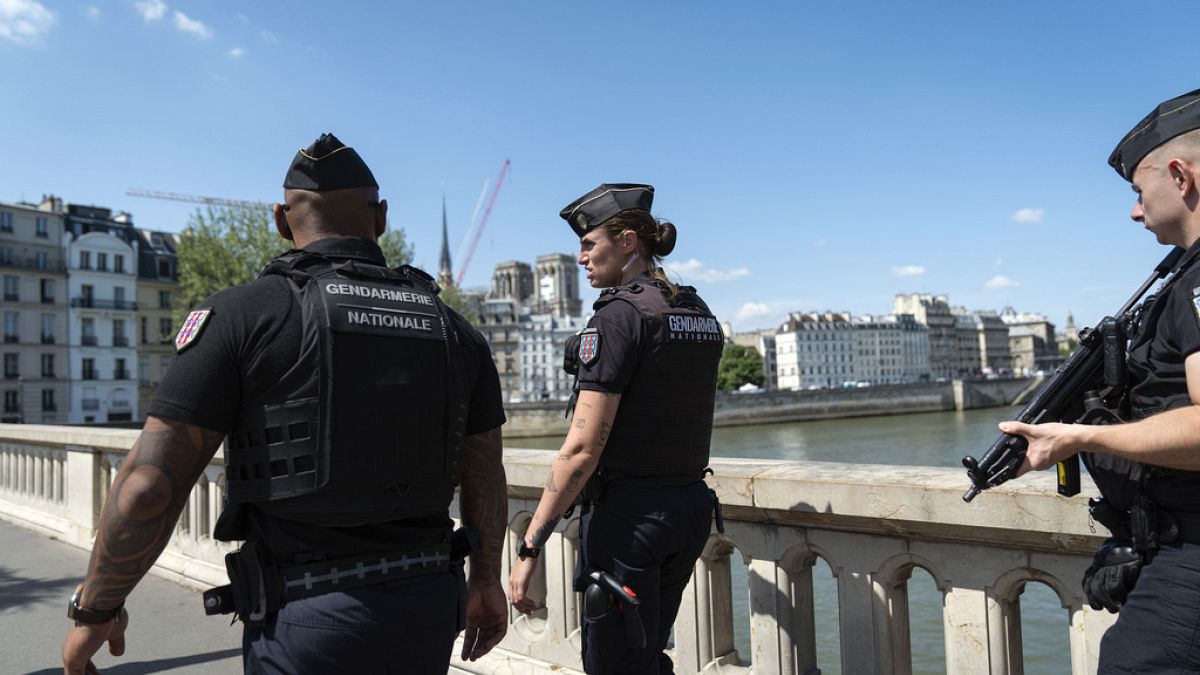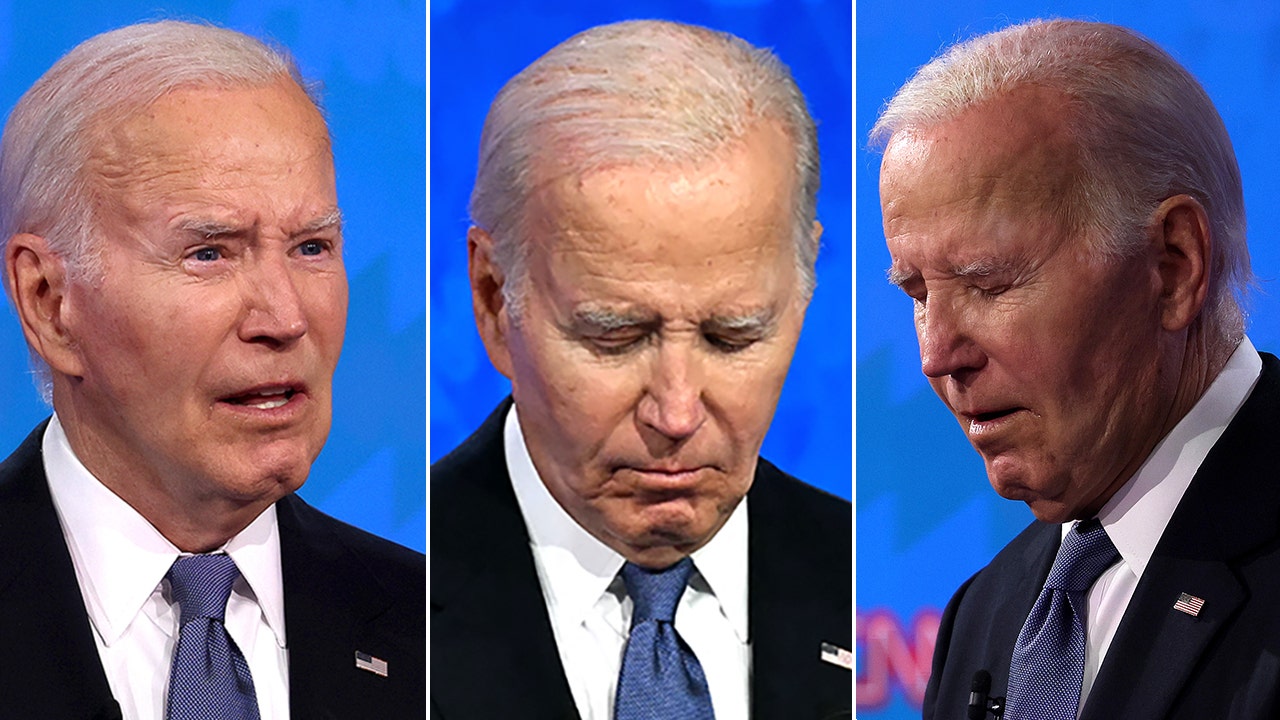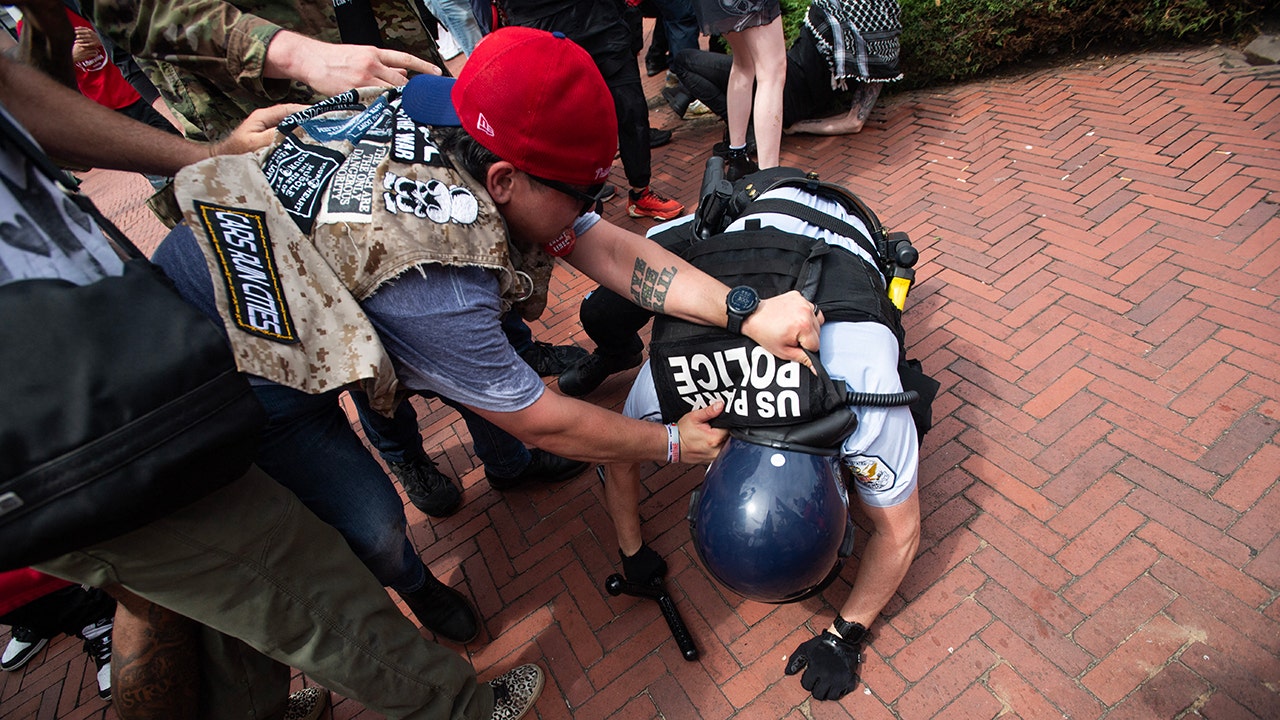Education
Alabama Basketball Manager Says He, Not Player, Was at Deadly Shooting

A student manager of Alabama’s men’s basketball team said Friday that he had been a passenger in the car of a star player, Brandon Miller, during a January shooting in Tuscaloosa. One person was killed and Mr. Miller’s car was hit by stray bullets in the episode, which involved multiple vehicles.
The manager, Cooper Lee, acknowledged his presence at the crime scene to The New York Times after another player, Kai Spears, sued the newspaper this week for having reported in March that he had been in Mr. Miller’s car when its windshield was struck by bullets.
Mr. Spears has denied being in the car and said in the lawsuit that being falsely identified as the passenger “will forever label him as a person associated with a murder.” The lawsuit, which seeks damages for defamation and invasion of privacy, disclosed for the first time that Mr. Lee had gotten into Mr. Miller’s car at 1:40 a.m. on Jan. 15, just minutes before the shooting.
“I can confirm that I was the passenger in Brandon Miller’s car at the time of the shooting,” Mr. Lee, 21, said in an email to The Times. Mr. Lee, who is not accused of wrongdoing, declined to comment further beyond confirming that Mr. Spears was not in the car. His LinkedIn profile lists him as a hospitality and sports management major at the university.
A spokeswoman for The Times, Danielle Rhoades Ha, said the article would be corrected.
“We have a longstanding policy of correcting errors,” she said in a statement. “Based on information in the affidavit and new reporting by our newsroom, we believe our original story was not accurate and plan to append an editor’s note to the story.”
Two people have been charged with capital murder stemming from the shooting: Darius Miles, who began the season on the team, and his friend Michael Davis, who was accused of firing the fatal shots that killed Jamea Harris, 23, a passenger in a second car. Mr. Miles pleaded not guilty; Ms. Davis is seeking youthful-offender status.
Mr. Miller, likely to be a top pick in the N.B.A. draft, and Mr. Lee were not harmed and have not been implicated in the incident, which unfolded as bars emptied out along the Strip, a gathering spot near campus along University Boulevard.
Ms. Harris’s killing has garnered widespread attention, coming at a time when the University of Alabama team, the Crimson Tide, was among the top-ranked in the country and contending for a national championship. Alabama’s handling of the case has been closely examined in the months since, as players present at the crime scene continued to suit up for games while the authorities investigated.
Two months after the episode, on March 15, The Times reported that Mr. Spears, who was a freshman walk-on, had been in Mr. Miller’s car during the shooting. The identity of Mr. Miller’s passenger was attributed by The Times to a person familiar with the investigation, who spoke on the condition of anonymity to discuss sensitive matters.
In a brief locker-room interview then, Mr. Spears was quoted by The Times as saying, “I’m sorry, I’m not going to be able to speak about that.”
But after the article published online, Mr. Spears, his family and the university said the account was inaccurate, and The Times updated the article to reflect their statements.
An Alabama athletics spokeswoman said at the time that “based on the information we have, there were no current student-athletes present at the scene other than Brandon Miller and Jaden Bradley,” a player who was in a third car near the shooting. The university’s athletic director, Greg Byrne, said in a statement that it was not true that Mr. Spears was present.
And Mr. Spears’s father, Christian Spears, who works at Marshall University as athletic director, said in a statement on Marshall’s athletic website that he was “disappointed in the irresponsible and demonstrably false reporting by the NY Times.”
The lawsuit, filed on Wednesday in federal court in Alabama, said that lawyers for Mr. Spears had sought a retraction from The Times on March 20 but the newspaper did not grant the request.
Mr. Spears was “wrongfully thrust into nationwide news,” leading to emotional distress for being linked to a “criminal event,” the suit states.
The suit provided the first public accounting of Mr. Spears’s whereabouts during the shooting, including a sworn statement from a visiting high school friend and exchanges from FaceTime video calls with Mr. Bradley, who has since transferred to the University of Arizona.
After Alabama’s win against Louisiana State on Jan. 14, Mr. Spears went to eat at a Waffle House with two high school friends visiting from Clemson University before returning to his dorm to get ready for a night out, which included meeting Mr. Miller at a barbecue restaurant near the Strip, according to the suit and the sworn statement from the friend, Dylan Serafini.
As they dined at the barbecue restaurant, Mr. Spears had a FaceTime call with Mr. Bradley, who, along with Mr. Miller, asked Mr. Spears and his friends if they wanted to stay out. They declined because of the late hour, and Mr. Spears and his high school friends headed home, while Mr. Miller got into his car with the team manager, Mr. Lee, the suit says.
Within minutes, Mr. Spears was back on FaceTime with Mr. Miller and Mr. Bradley to ask where they ended up going, the suit says. He learned then that shots had been fired at the windshield of Mr. Miller’s car and the young men were “frantic.”
“Jaden Bradley was upset and shows Kai on FaceTime Brandon Miller’s windshield with bullet holes and tells Kai Spears he must call him later,” Mr. Serafini said in his sworn statement.
On Friday, the Alabama athletic department referred to their statement in March in which the athletic director said both Mr. Bradley and Mr. Miller were cooperating witnesses and had not been charged with any offense or violated any university policy.
Julie Tate contributed research.

Education
The Youngest Pandemic Children Are Now in School, and Struggling

The pandemic’s babies, toddlers and preschoolers are now school-age, and the impact on them is becoming increasingly clear: Many are showing signs of being academically and developmentally behind.
Interviews with more than two dozen teachers, pediatricians and early childhood experts depicted a generation less likely to have age-appropriate skills — to be able to hold a pencil, communicate their needs, identify shapes and letters, manage their emotions or solve problems with peers.
A variety of scientific evidence has also found that the pandemic seems to have affected some young children’s early development. Boys were more affected than girls, studies have found.
“I definitely think children born then have had developmental challenges compared to prior years,” said Dr. Jaime Peterson, a pediatrician at Oregon Health and Science University, whose research is on kindergarten readiness. “We asked them to wear masks, not see adults, not play with kids. We really severed those interactions, and you don’t get that time back for kids.”
The pandemic’s effect on older children — who were sent home during school closures, and lost significant ground in math and reading — has been well documented. But the impact on the youngest children is in some ways surprising: They were not in formal school when the pandemic began, and at an age when children spend a lot of time at home anyway.
The early years, though, are most critical for brain development. Researchers said several aspects of the pandemic affected young children — parental stress, less exposure to people, lower preschool attendance, more time on screens and less time playing.
Yet because their brains are developing so rapidly, they are also well positioned to catch up, experts said.
The youngest children represent “a pandemic tsunami” headed for the American education system, said Joel Ryan, who works with a network of Head Start and state preschool centers in Washington State, where he has seen an increase in speech delays and behavioral problems.
Not every young child is showing delays. Children at schools that are mostly Black or Hispanic or where most families have lower incomes are the most behind, according to data released Monday by Curriculum Associates, whose tests are given in thousands of U.S. schools. Students from higher-income families are more on pace with historical trends.
But “most, if not all, young students were impacted academically to some degree,” said Kristen Huff, vice president for assessment and research at Curriculum Associates.
Recovery is possible, experts said, though young children have not been a main focus of $122 billion in federal aid distributed to school districts to help students recover.
“We 100 percent have the tools to help kids and families recover,” said Catherine Monk, a clinical psychologist and professor at Columbia, and a chair of a research project on mothers and babies in the pandemic. “But do we know how to distribute, in a fair way, access to the services they need?”
What’s different now?
“I spent a long time just teaching kids to sit still on the carpet for one book. That’s something I didn’t need to do before.”
David Feldman, kindergarten teacher, St. Petersburg, Fla.
“We are talking 4- and 5-year-olds who are throwing chairs, biting, hitting, without the self-regulation.”
Tommy Sheridan, deputy director, National Head Start Association
Brook Allen, in Martin, Tenn., has taught kindergarten for 11 years. This year, for the first time, she said, several students could barely speak, several were not toilet trained, and several did not have the fine motor skills to hold a pencil.
Children don’t engage in imaginative play or seek out other children the way they used to, said Michaela Frederick, a pre-K teacher for students with learning delays in Sharon, Tenn. She’s had to replace small building materials in her classroom with big soft blocks because students’ fine motor skills weren’t developed enough to manipulate them.
Michaela Frederick, a pre-K teacher in Sharon, Tenn., playing a stacking game with a student.
Aaron Hardin for The New York Times Preschoolers do not have the same fine motor skills as they did prepandemic, Ms. Frederick said.
Aaron Hardin for The New York Times
Perhaps the biggest difference Lissa O’Rourke has noticed among her preschoolers in St. Augustine, Fla., has been their inability to regulate their emotions: “It was knocking over chairs, it was throwing things, it was hitting their peers, hitting their teachers.”
Data from schools underscores what early childhood professionals have noticed.
Children who just finished second grade, who were as young as 3 or 4 when the pandemic began, remain behind children the same age prepandemic, particularly in math, according to the new Curriculum Associates data. Of particular concern, the students who are the furthest behind are making the least progress catching up.
The youngest students’ performance is “in stark contrast” to older elementary school children, who have caught up much more, the researchers said. The new analysis examined testing data from about four million children, with cohorts before and after the pandemic.
Data from Cincinnati Public Schools is another example: Just 28 percent of kindergarten students began this school year prepared, down from 36 percent before the pandemic, according to research from Cincinnati Children’s Hospital.
How did this happen?
“They don’t have the muscle strength because everything they are doing at home is screen time. They are just swiping.”
Sarrah Hovis, preschool teacher, Roseville, Mich.
“I have more kids in kindergarten who have never been in school.”
Terrance Anfield, kindergarten teacher, Indianapolis
One explanation for young children’s struggles, childhood development experts say, is parental stress during the pandemic.
A baby who is exposed to more stress will show more activation on brain imaging scans in “the parts of that baby’s brain that focus on fear and focus on aggression,” said Rahil D. Briggs, a child psychologist with Zero to Three, a nonprofit that focuses on early childhood. That leaves less energy for parts of the brain focused on language, exploration and learning, she said.
During lockdowns, children also spent less time overhearing adult interactions that exposed them to new language, like at the grocery store or the library. And they spent less time playing with other children.
Kelsey Schnur, 32, of Sharpsville, Pa., pulled her daughter, Finley, from child care during the pandemic. Finley, then a toddler, colored, did puzzles and read books at home.
But when she finally enrolled in preschool, she struggled to adjust, her mother said. She was diagnosed with separation anxiety and selective mutism.
“It was very eye-opening to see,” said Ms. Schnur, who works in early childhood education. “They can have all of the education experiences and knowledge, but that socialization is so key.”
Preschool attendance can significantly boost kindergarten preparedness, research has found. But in many states, preschool attendance is still below prepandemic levels. Survey data suggests low-income families have not returned at the same rate as higher-income families.
“I have never had such a small class,” said Analilia Sanchez, who had nine children in her preschool class in El Paso this year. She typically has at least 16. “I think they got used to having them at home — that fear of being around the other kids, the germs.”
Time on screens also spiked during the pandemic — as parents juggled work and children cooped up at home — and screen time stayed up after lockdowns ended. Many teachers and early childhood experts believe this affected children’s attention spans and fine motor skills. Long periods of screen time have been associated with developmental delays.
Heidi Tringali, an occupational therapist in Charlotte, N.C., playing with a patient.
Travis Dove for The New York Times
Children are showing effects of spending time on screens, Ms. Tringali said, including shorter attention spans, less core strength and delayed social skills.
Travis Dove for The New York Times
Heidi Tringali, a pediatric occupational therapist in Charlotte, N.C., said she and her colleagues are seeing many more families contact them with children who don’t fit into typical diagnoses.
She is seeing “visual problems, core strength, social skills, attention — all the deficits,” she said. “We really see the difference in them not being out playing.”
Can children catch up?
“I’m actually happy with the majority of their growth.”
Michael LoMedico, second-grade teacher, Yonkers, N.Y.
“They just crave consistency that they didn’t get.”
Emily Sampley, substitute teacher, Sioux Falls, S.D.
It’s too early to know whether young children will experience long-term effects from the pandemic, but researchers say there are reasons to be optimistic.
“It is absolutely possible to catch up, if we catch things early,” said Dr. Dani Dumitriu, a pediatrician and neuroscientist at Columbia and chair of the study on pandemic newborns. “There is nothing deterministic about a brain at six months.”
There may also have been benefits to being young in the pandemic, she and others said, like increased resiliency and more time with family.
Some places have invested in programs to support young children, like a Tennessee district that is doubling the number of teaching assistants in kindergarten classrooms next school year and adding a preschool class for students needing extra support.
Oregon used some federal pandemic aid money to start a program to help prepare children and parents for kindergarten the summer before.
For many students, simply being in school is the first step.
Sarrah Hovis, a preschool teacher in Roseville, Mich., has seen plenty of the pandemic’s impact in her classroom. Some children can’t open a bag of chips, because they lack finger strength. More of her students are missing many days of school, a national problem since the pandemic.
But she has also seen great progress. By the end of this year, some of her students were counting to 100, and even adding and subtracting.
“If the kids come to school,” she said, “they do learn.”
Education
Video: Clashes Break Out at U.C.L.A.

new video loaded: Clashes Break Out at U.C.L.A.
transcript
transcript
Clashes Break Out at U.C.L.A.
Police arrested more than 20 pro-Palestinian demonstrators on U.C.L.A.’s campus after several physical confrontations with security guards.
-
“Are you OK, are you OK?” “Don’t hit him. Don’t hit.” “Wrong person, wrong person, wrong person.” “I was just holding you.”
Recent episodes in Israel-Hamas War
Education
Read a Judge’s Letter of Recommendation for Elias Irizarry

Tanya S. Chutkan
Judge
UNITED STATES DISTRICT COURT
FOR THE DISTRICT OF COLUMBIA
June 1, 2023
E. BARRETT PRETTYMAN COURTHOUSE
WASHINGTON, DC 20001
202-354-3390
The Citadel, The Military College of South Carolina
Admissions Office
171 Moultrie Street
Charleston, South Carolina 29409
Re:
Letter of Recommendation for Elias Irizarry for Readmission to The Citadel
Dear Admissions Office,
I am writing to recommend Elias Irizarry for readmission to The Citadel. I first encountered Mr.
Irizarry in 2021, when he appeared as a defendant in one of my cases, and I have had the opportunity to
learn more about him during the plea hearing, status conferences, and sentencing hearing. It is rare for
me to write a letter on behalf of a defendant, and this is the first time I have done so to recommend a
defendant for college admission. But Mr. Irizarry impressed me and has demonstrated that he is an
individual worthy of a second chance.
In considering Mr. Irizarry’s particular circumstances, I am reminded of the words of human
rights lawyer Bryan Stevenson: “Each of us is more than the worst thing we’ve ever done.” These
words acknowledge the potential for growth and transformation within us all, especially for someone as
young as Mr. Irizarry, who was only 19 years old when he committed the offense for which I sentenced
him. I ask that you look beyond Mr. Irizarry’s past mistakes, for which he has demonstrated genuine
remorse, defer to his exceptionally positive history, and allow him the opportunity to prove that the sum
of his character extends beyond a singular flawed decision.
Mr. Irizarry is a bright young man who wishes to serve his community and his country. He has
been a diligent and committed student and community member and received outstanding grades and
numerous accolades from esteemed institutions like The Citadel, the United States Marine Corps, Model
UN, and JROTC. Over the past five years, he has dedicated nearly 600 hours to community service,
assisting at hurricane sites and a Veterans Hospital. He has further demonstrated his commitment for
civil service by completing training to become a FEMA volunteer firefighter.
Although Mr. Irizarry’s actions were serious and were dealt with as such, it is important to weigh
his youth and susceptibility to influence. As a judge and the mother of two sons in their twenties, I
know that Mr. Irizarry is at a crucial inflection point for young adults. The educational system, like the
criminal justice system, can serve as a catalyst for positive transformation, enabling youth to learn from
their mistakes.
Accordingly, I write this letter because Mr. Irizarry has displayed impressive sincerity, remorse,
and a determination to make amends. I believe that if he is given the opportunity to re-enroll at The
Citadel, he will continue to thrive academically and personally, as well as encourage others to overcome
obstacles and pursue public service.
Should you require any further information or assistance, please do not hesitate to contact me.
Sincerely,
Tanya S. Chutkan
Tanya S. Chutkan
-

 World1 week ago
World1 week agoOne dead after car crashes into restaurant in Paris
-

 Midwest1 week ago
Midwest1 week agoMichigan rep posts video response to Stephen Colbert's joke about his RNC speech: 'Touché'
-

 News1 week ago
News1 week agoVideo: Young Republicans on Why Their Party Isn’t Reaching Gen Z (And What They Can Do About It)
-

 Movie Reviews1 week ago
Movie Reviews1 week agoMovie Review: A new generation drives into the storm in rousing ‘Twisters’
-

 News1 week ago
News1 week agoIn Milwaukee, Black Voters Struggle to Find a Home With Either Party
-

 Politics1 week ago
Politics1 week agoFox News Politics: The Call is Coming from Inside the House
-

 News1 week ago
News1 week agoVideo: J.D. Vance Accepts Vice-Presidential Nomination
-

 World1 week ago
World1 week agoTrump to take RNC stage for first speech since assassination attempt














